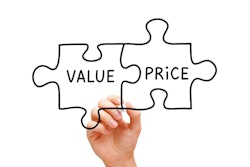Far too often, pricing for distributors turns into a futile exercise in juggling.
At any given moment you are dealing with up to thousands of customers purchasing from your list of hundreds of thousands of products after intensely negotiating their contracts. Mixed with supplier prices, transportation, and other costs, this can lead to razor-thin margins. Add deliberations with your suppliers and wavering inventory turnover rates across regional locations and it can become too much to handle.
Now factor in the multiple technological solutions distributors tend to use to manage their various data elements, such as customer rebates, supplier programs, competitive cross reference files, etc. This creates a cycle of missed opportunities to improve margins and profit.
Modern distributors still abide by traditional pricing methods that focus their efforts on avoiding complications. Whether they base prices on cost, their customers, or their competition, a simplified pricing model does more harm than good, despite the occasional growth spurt.
Innovavions in the field have changed the way pricing should be viewed. “Embrace the complexity” should be the new mantra of distributors everywhere.
But, how? It’s all well and good to preach about the benefits of improved pricing. Yet, the different factors I mention above can scare even the most forward-thinking professionals from making a change, as long as they are seeing minor growth.
There are three aspects of the distribution pricing model that are primed for disruption and it starts with guidance.
Building a Pricing Function
Pricing, as distributors know it, relies heavily on the cost of the product or raw material. From the get-go, it seems like minimal control of the price is in the hands of the distributor; the supplier sets the starting price level. More often than not, the price charged by your supplier will fluctuate, and you will follow suit as you see fit to avoid losing much business.
Wouldn’t it be nice to have the guidance to know when and where you can pass along these price increases?
Within the structure of your organization should be a pricing function. This can be in the form of a centralized group controlling the prices for the company, a decentralized function that allows each region or product manager to utilize their localized knowledge, or a center-led format, which uses the centralized group to set prices, but allows the decentralized group to have the final say on what to do.
No matter what you choose, the important facet of this model is focusing more on pricing as an adjustable asset in your control to emphasize the value of your products, not the cost.
Above I mentioned cost, customers, and competition. With the pricing function established, your new pricing models can incorporate all three, rather than just one at a time. As each aspect is incorporated, the value of your product begins to take shape.
This is the first step, but your pricing function cannot succeed with disconnected data.
A Unified Pricing Database
Your new pricing team needs visibility. If they are pricing blind, you are leaking margins. By using multiple systems, your team is handcuffed by the level of analysis that can be performed. Consequently, cost plus or list price models become the chosen pricing option. Defaulting to these models removes the ability to deeply analyze how your business and products fit into the greater ecosystem.
To increase visibility into pricing options, adopt a platform that brings your data into one space. New profit opportunities will arrive as a result of the increased cross-analysis capabilities.
Take your large accounts as examples. You likely have a few large accounts that receive the bulk of your attention. These are negotiated heavily and scrutinized at every step of the process to ensure maximum profitability. Market factors, competitor movement, and cost are all considered when setting and analyzing these prices.
Now, imagine if your data is in one place and that large account scrutiny can be automated across your entire portfolio of accounts, increasing the profitability of those deals.
With a unified source of pricing data, you will also be able to uncover opportunities to negotiate better supplier costs, optimizing your supplier rebates and costs.
The staff is in place and the technology is up and running. Progress is being made, but you still aren’t quite sure what to look for.
Where to Look
Standard distribution pricing models segment at the base level: product category, region, and size of customer for example. While a good start, this is nowhere near enough. With the cross-analyses in your new system, you must look into internal and external data — current and historical. From these analyses you will be able to look horizontally, in addition to vertically.
Market factors are a great place to start. Are there big changes occurring? Are your suppliers’ raw materials being affected? Be proactive in your analysis and research to prepare your own system for changes.
Additionally, your customers are possibly the biggest source of insight. It seems obvious, but this group is frequently overlooked. When analyzing your contracts, look at your customer’s willingness to pay. Are they buying more of a certain product? Are they purchasing more products off contract? Are they not purchasing off contract at all?
These questions lead to immense profit opportunities and take all factors into account when defining your value. Of course, these are small on a case-by-case basis, but the incremental impact to your bottom line is substantial.
Segmentation by product category, region, and customer size is still useful, but more so when used in conjunction with other product, customer, and transaction attributes like: commodity versus non-commodity, strategic customer versus non-strategic, customer value and product classification.
Your pricing team can then work with your frontline sales organization by guiding them with data-based insights along with the supporting metrics and tools to ensure your frontline is confident in the guidance. A strong collaboration between pricing and sales solidifies positive pricing behaviors.
Focusing on cost or list price is a temporary profit squeeze that keeps you chasing an unsustainable benchmark of success. Take the steps to implement value-based pricing as an emphasis. A complex business environment does not preclude you from employing a multifaceted pricing model that adequately reflects your value.
Kim has over 25 years of professional experience in the distribution industry. Prior to joining Vendavo, Kim worked at OfficeMax and was responsible for pricing strategy, profit management, performance measurement and process re-engineering.























